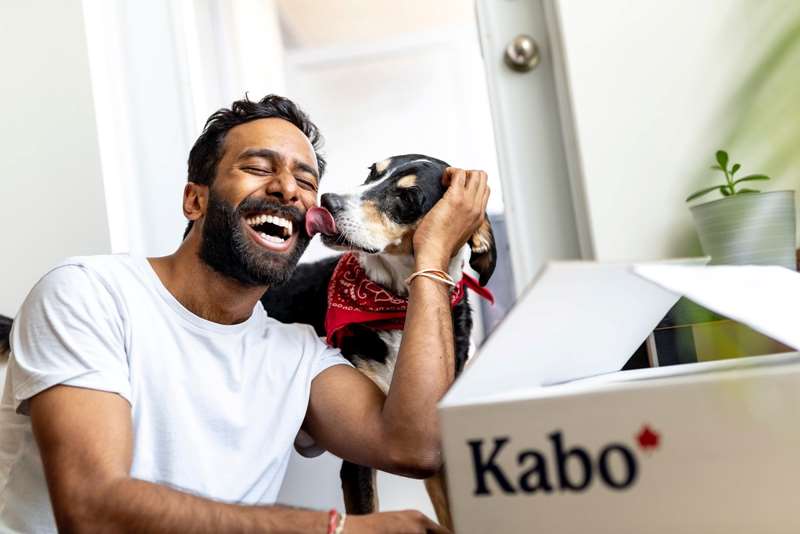Puppies are like babies, so cute and adorable yet extremely delicate to take care of. If you intend to own a puppy, or your dog has given birth to a couple of litters, then a feeding schedule is crucial.
What should you feed your puppy?
Before we delve into the right feeding schedule for your buddy, let’s understand what they need in terms of nutrients.

You want your puppy to develop into a strong and healthy dog, right? Then it’s only proper that you feed him food that will build his bones, teeth and give him enough energy. Therefore, your puppy’s food should be high in calcium, proteins, and starch.
If you aren’t sure of your pup’s nutritional requirements, check the Merck Veterinary Manual for different dog breeds’ dietary needs in line with their age.
When do I start feeding my puppy?
Ideally, your puppy should stick with the mother for the first six weeks feeding on the mother’s milk. Like human breast milk, this milk is rich in antibodies, which will boost your puppy’s immune system. Also, the milk contains a balanced supply of nutrients vital for the puppy at that early age.
At about four weeks, most dogs are unable to satisfy their litter with exclusive breast milk. Now would be a good time to introduce the pup to solid food.
Introduction to solid food should be gradual not to upset the puppy’s stomach as their digestive system needs to adjust to the new food.
How to select quality food and know the right portions
Selecting quality food for any pet can be difficult, especially if you’re a first-time pet parent. But knowing the nutritional needs of your pup can help you select the right foods.
The best dog food should have adequate amounts of meat, grains, vegetables, and fruits. Remember that your puppies need enough nutrients to enhance their growth and to maintain their energy levels. Don’t introduce your pup to adult dog food until they approach maturity.
Check the food label to get the ingredients and the nutritional adequacy of the food. Ensure the food is also approved by the Association of American Feed Control Officials (AAFCO). Besides, you can always ask your vet to give you your pup’s nutritional needs and suggest the best puppy foods you can buy from the market.
When determining the right feeding quantity, you should remember that different dog breeds require varying feeds. Take your puppy to a vet who can help you guide you on the appropriate feeding portions for your pup. But a general rule of thumb is that a well-fed puppy should have thinly visible ribs, but no fat should be felt when you run your fingers through them.
How many times should I feed my puppy?
If you just brought home a puppy, you’re probably wondering how often you should feed your pup. It’s best to feed them three or four times a day, depending on the number of feeds. If you decide to feed the pup thrice, then divide the total daily quantity three times.
According to Our Fit Pets, giving your pooch several meals a day is better than giving him one large meal because it reduces the risk of overfeeding. Besides, you can monitor how your pup is feeding with smaller meals, and if the portions aren’t enough, you can adjust accordingly.

Which foods should you avoid
It’s okay to give snacks and treats to your pup. But it would be best if you don’t overdo it.
Puppies are like children as they enjoy sweet and sugary food. But, such foods may not have the right nutrients. Set up a feeding timetable to ensure the puppy gets a balanced diet in a daily feeding. Only give your puppy treats during training or as a way of bonding.
Avoid giving your puppy family food when dining, as they might not develop a proper feeding routine. Some human foods are also harmful to dogs. Such foods include chocolate, avocados, grapes, baked products with yeast, and raisins. If your dog shows signs of allergies or intolerances to certain foods, you can try to work out what they’re sensitive to with a limited ingredient diet.
A daily feeding routine for your puppy
Now that you know what to feed your pup, here is a recommended feeding routine for him.
- Take the puppy out for a potty break and some stretching exercises.
- Feed the pup their first nutritious portion of the day. Wait for 15 minutes before giving them water.
- Take the puppy out to relieve again. Spare some time for bonding and training.
- Allow your pup to take a morning nap. Provide a quiet place where there is no noise or disturbances.
- After the puppy is awake, take him outside for a potty break. Give your pup the second feeding. Repeat the same routine done after breakfast.
- Again, a potty break when the pup wakes up is ideal. Also, create time to train and play to help the puppy burn excess calories. Feed the puppy the third meal if you have four meals planned in a day.
- Feed the puppy the final meal of the day. Ensure you feed them early enough to give the dog enough time to digest the food before going to bed.
- Spend time with your pup and enjoy light games. Provide a chewing toy to distract him while you’re taking your evening meal. Keeping the dog away from the dinner table minimizes the temptation to feed the dog with family food. Schedule a specific time to put your pup to bed to help him develop a sleep routine.
Setting up a feeding schedule for your puppy isn’t difficult when you understand their nutritional needs. But remember, if you’re stuck, you can always seek the guidance of your vet when it comes to taking care of your pup.
